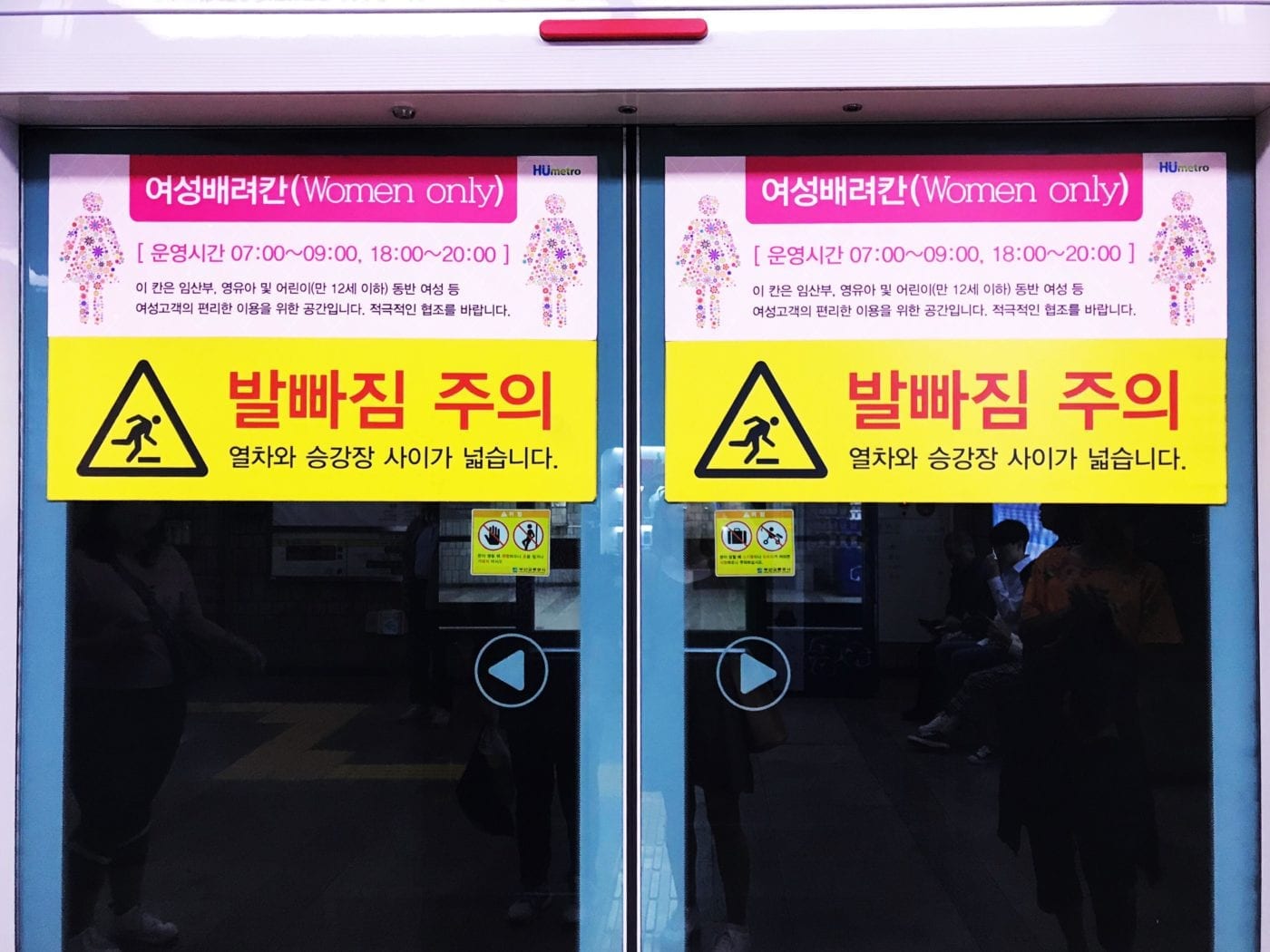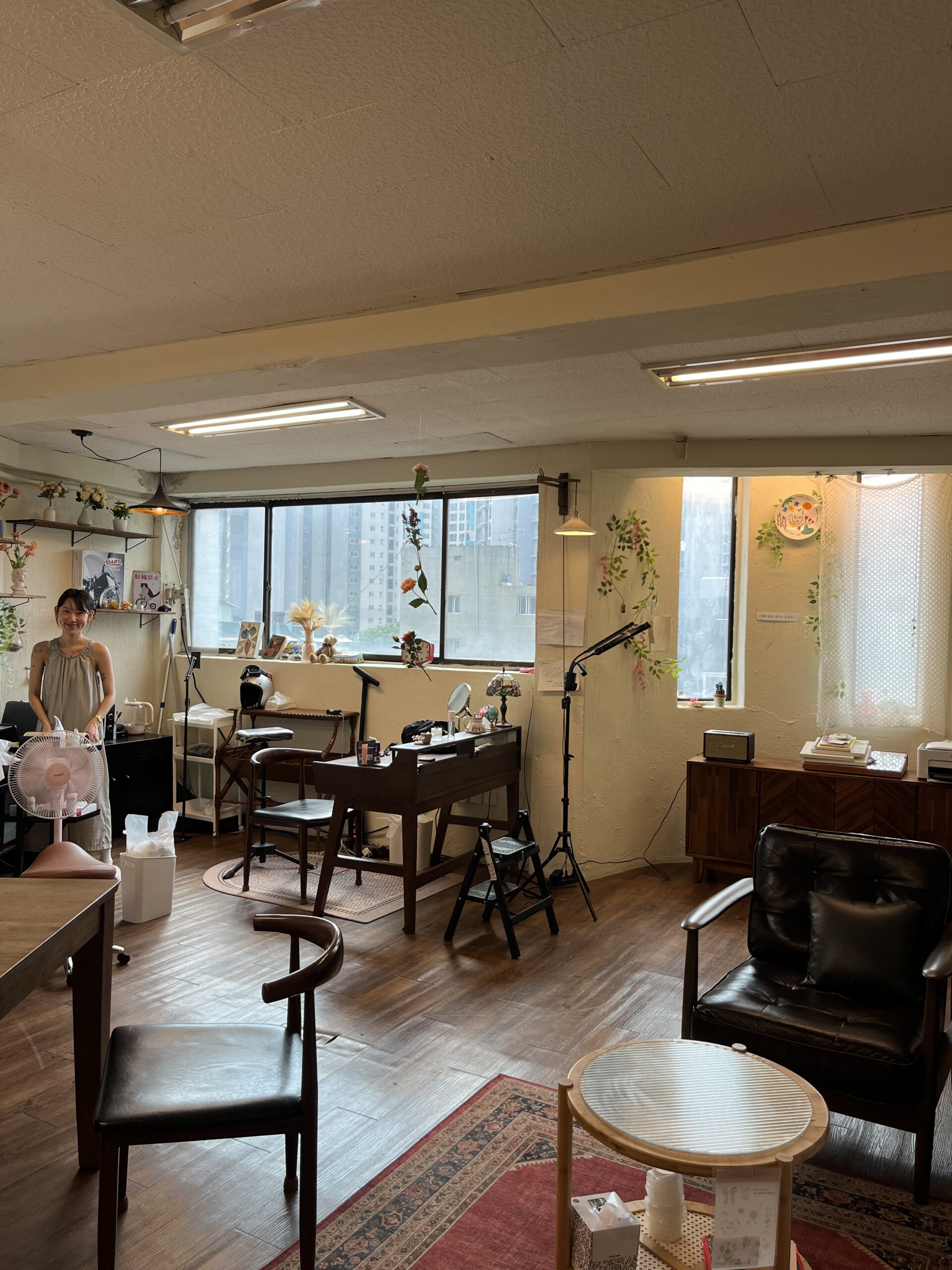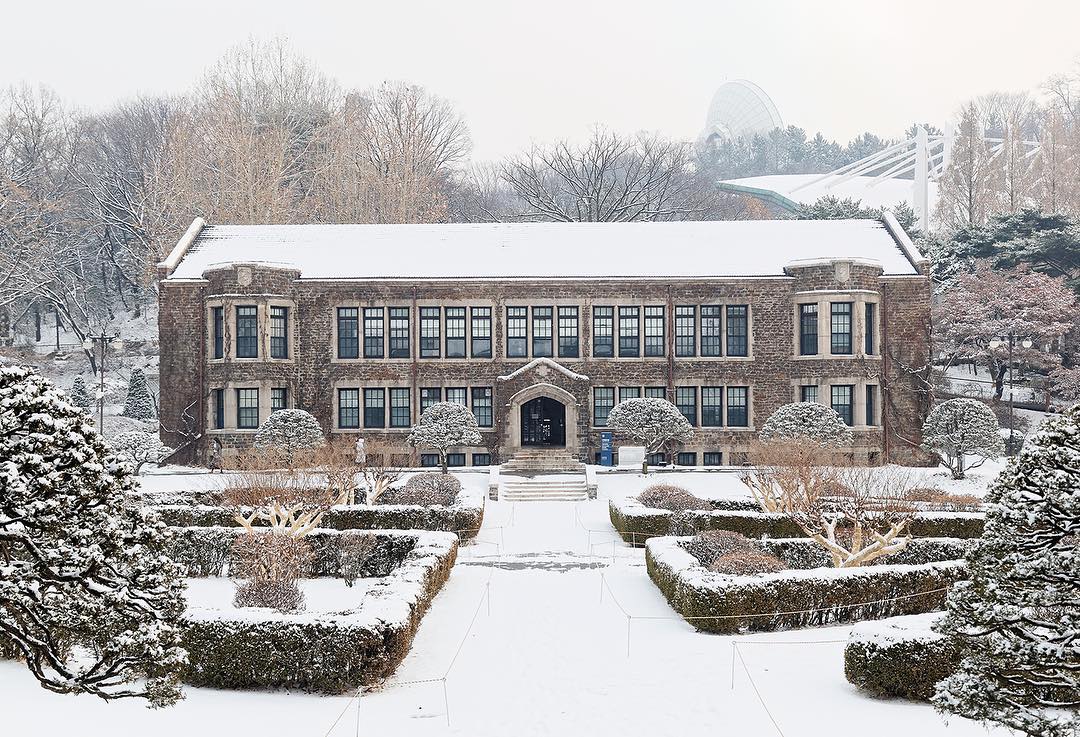In the wake of the #MeToo movement and a government crackdown on spycam porn, Korea has turned its attention toward the thousands of sexual assault and harassment cases that go under the radar. A chunk of those assaults
The Seoul Metro and Seoul Metropolitan Rapid Transit Corporation have already tried women-only subway cars twice, only to retreat thanks to backlash. After the launch, they were accused of promoting sexism toward men and victim blaming toward women.
In 2016, the Busan Transport Corporation gave women-only subway cars another shot, pasting pink signs all over Busan’s stations. These signs still remain, but the effectiveness of women-only subway cars is unknown. It is also unclear whether Seoul Metro will test-run them again in Korea’s public transport mecca.
We took a closer look at the what, where and why not questions surrounding women-only subway cars, and spoke to a Busan local to get a firsthand look into the combat against sexual violence.
Why the Need for Women-only Cars?
In 2017, 1,094 sexual assault crimes were reported on Seoul’s metro, a 30% increase from the last two years. These women have been the subject of volatile behaviour, including uncomfortable staring, having their hair sniffed, having their bodies inappropriately touched, verbal abuse, physical abuse and being followed after leaving the subway.
This past year the #MeToo movement has gained dynamic speed, as well as protests exposing the use of spycams. Korea has responded in a number of ways with the introduction of female-first parking spaces located closer to shopping centers, “scream detectors” in public bathrooms, CCTV saturated areas on subway platforms and an app called “지하철안전지킴이” (Subway Safekeeper), which allows passengers to report assaults and/or harassment. They’ve also put in place posters with warnings and emergency contacts.
However, nothing has been said about the comeback of the pink passenger cars in Seoul.
Are Women-only Cars Effective?
The main question is whether the subway carriages will prove successful, despite the second round of recalls. As for Busan, mixed opinions still keep the locals at odds with the cars, but some women seem grateful for their introduction.
Kim Chae-yun, a university student studying in Busan, expressed that the subway cars give her the peace of mind she needs to travel safely. “I feel comfortable,” Kim told 10 Magazine. “Because when I sit [in normal carriages] I always feel like I have to touch with a man’s body unnecessarily. But when I’m in the women-only carriage there is more room and I do not have to touch anyone.
“I have seen many women use it. I think young women prefer to ride in there.”
While young men seemingly comply with the specific times designated to females riding the carriages, some are not as open to the idea. “When men realize that they are in woman carriage they transfer to other carriage,” Kim said. “But some men who are older than 40 don’t care at all.”

Backlash to Women-only Subway Cars?
Despite the rise in reports of sexual assault, female-only carriages are still exclusive to Busan. These pink subway cars have been under scrutiny since their introduction in 2016, namely for not targeting the source of the problem with a crackdown through law and education.
“We believe that separating women and men won’t solve the fundamentals of the problem,” said Korea Sexual Violence Relief Center’s Lee Seon-mi. “To really tackle the problem, you need to understand the crimes. General education is more important.”
Korean women have expressed concerns that by making a space reserved for females, those who aren’t in the car at the time of their assault will be blamed.
“This can make people misunderstand that women who don’t ride in the designated cars are fine with sexual harassment,” one netizen said, via The Korea Bizwire. “And if this harassment does occur, there may be situations in which women take the blame for not using the designated cars.”
On the other hand, men have also started to fear being wrongfully accused for assaulting women, especially during the mayhem of Seoul’s peak hour. Even so, the carriages have not been able to settle these fears as they are overshadowed by the concerns that they fuel reverse discrimination toward male commuters.
Should Seoul Implement Women-only Cars?
In past attempts, Seoul has tried a number of various approaches to get the women-only zones working. Seoul Metro has changed the designated time, from typical rush hours to the last subway car of the day only. They also changed the name from “women-only” cars to “women-safety” cars in their 2011 stint. Still, the criticism remained stagnant.
However, 2019 is a new world for the Korean feminism movement, which although unpopular, has brought attention to the plights of women in Korea. Considering the government’s crackdown on spycam issues, in this new context we question whether the cars will be more widely supported if brought back now or face the same hostile response.











3 comments
pete chip
Women say they want equality, but then they want all sorts of preferential treatment. Korea is not a muslim country women have all the rights that men have. No to women only subway cars, and No to women only parking spaces….they are an insult to men and to women.
Anonymous
you’re an idiot. do you know how many women undergo sexual harrassment and NEVER speak up about it. during the metoo movement, i already knew i had been sexually harassed (and once sexually assaulted) THREE Times. once a police officer backed me against a rail when i was working at the airport and touched my chest, another one was a religious leader who made sexually aggressive comments and would touch my shoulders and legs all the time, another was a family member who would come up behind me and press his private into my back when i would be sitting at the piano and practicing. not to mention when i had been changing and heard something at the wall of a place i was staying at the time and when i went to the door and opened it, i found a man spying on me on the other side of the wall. the assault was when another religious leader raped me.
during metoo i also found out my mother had been sexually harassed at the age of 13 and when she was a teen and then again when she was an adult. i also found out my sister in law and BOTH of my best friends had been as well (one of which included sexual assault). i also found all that all 3 of my aunts had been harassed/assaulted as well at some point in their lives. that means ALL the most important women in my life were victims of sexual misbehavior from men in their lives. thats right 100% of the immediate family members (females) in my life and about 3 cousins were also harassed as well. this doesnt even include the other women around me (more casual friends etc) that confessed about themselves too. all of our cases included touching too- not comments that we were overreacting about or behavior we just “imagined” to be inappropriate.
i was stunned to learn how many of us had hidden this from each other without ever knowing because we felt embarrassed and ashamed, without ever knowing how widespread the problem is. so how DARE you come at me trying to tell ME what is best for myself and the women in my life. you sound like one of the men who are part of the problem by pretending the issue doesnt exist and we’re just a bunch of sensitive females who overreact. you let your wife, mom, sister or daughter get groped, touched, harassed, molested or heaven forbid… raped. and then let me know if you feel the same way. SMH
Frank White
Well, maybe men should stop being pervy harrassers. You should also start getting harrassed in public to help equal things out as well? Why are you so scared?